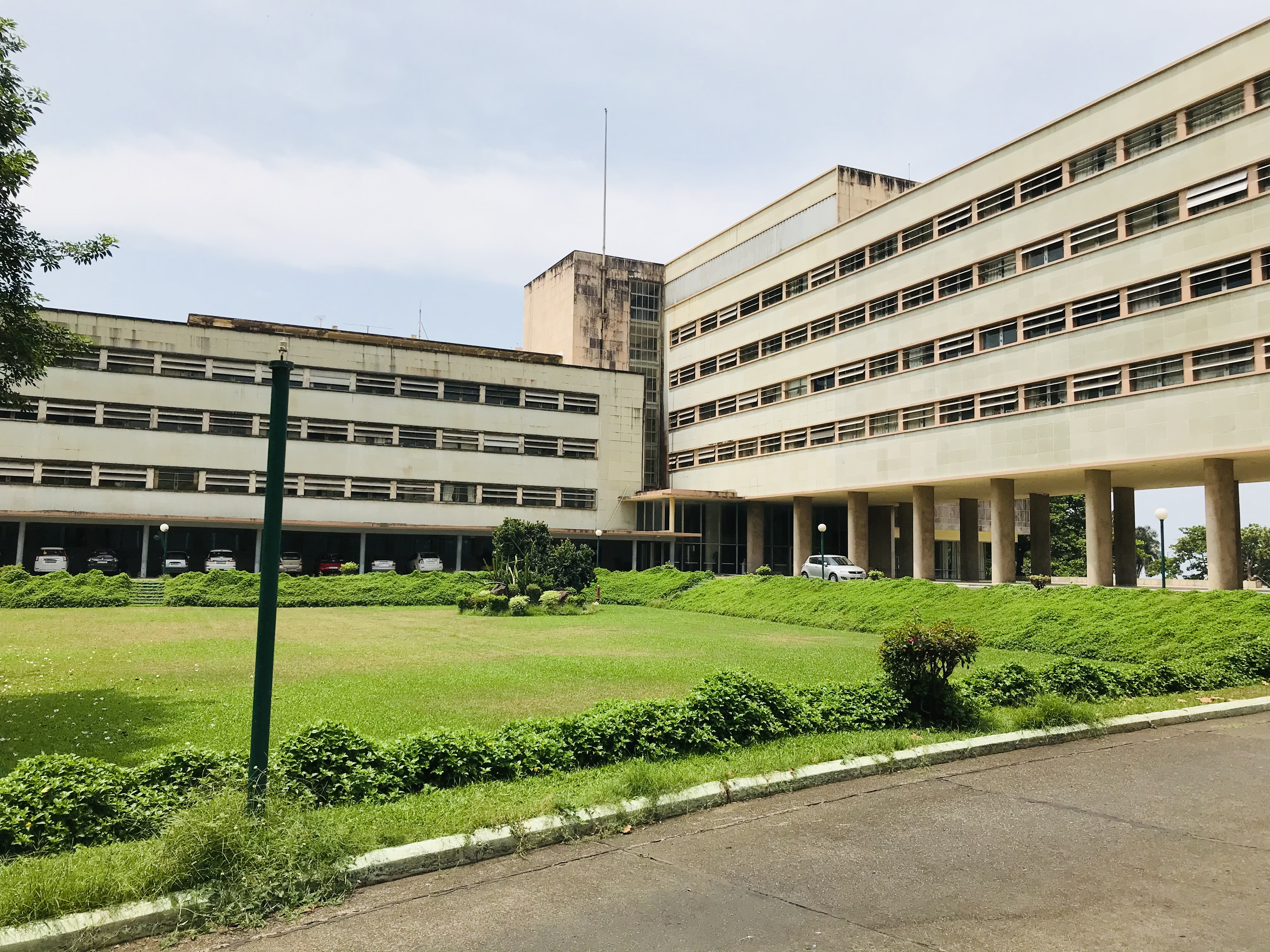Archive
TIFR
- TIFR
Tata Institute for Fundamental Research, The TIFR Art Collection
- University / Higher Education Institute / Research Institute
The TIFR is one of India’s premier scientific institutions. Inside its buildings, scientists ponder over path-breaking ideas. Also, within its hallowed walls is a fine collection of modern Indian art.
Word Count: 31
1 Homi Bhabha Road, Navy Nagar, Colaba, Mumbai.

The TIFR building (Photo: Ananya Dasgupta, 2021). 
The TIFR premises and gardens (Photo: Ananya Dasgupta, 2021). 
Colonnade on the way to the TIFR entry (Photo: Ananya Dasgupta, 2021). 
Outside view of the TIFR foyer with the mural Bharat Bhagya Vidhata by M.F. Husain, 1963 (Photo: Ananya Dasgupta, 2021). Chatterjee, Mortimer. “Interview of Kekoo Gandhy.” The TIFR Art Collection, edited by Mortimer Chatterjee and Tara Lal, Tata Institute of Fundamental Research / Marg Foundation, 2010, p. 11.
Chatterjee, Mortimer, and Tara Lal. The TIFR Art Collection. Tata Institute of Fundamental Research / Marg Foundation, 2010.
Chowdhury, Indira, and Ananya Dasgupta. A Masterful Spirit: Homi J. Bhabha 1909–1966. Penguin Books, 2010.
Word Count: 54
Letter to Maulana Azad, July 24, 1947, © TIFR Archives, Mumbai.
Word Count: 8
- 01-06-1945
Homi Jehangir Bhabha, M.F. Husain, Rudi von Leyden, Walter Langhammer
- Bombay
- Ananya Dasgupta. "TIFR." METROMOD Archive, 2021, https://archive.metromod.net/viewer.p/69/2951/object/5145-7554201, last modified: 27-08-2021.
-
Rudolf von LeydenGeologistAdvertisement SpecialistJournalistArt CriticArt CollectorCartoonistBombay
The advertisement expert, Rudolf von Leyden, became a major art critic and art historian in Bombay in the 1940s, advocating an urgent need for modernism in art in post-colonial India.
Word Count: 30
Homi Jehangir BhabhaScientistCollectorArtistBombayHomi Jehangir Bhabha was a world class scientist, institution builder, an artist and art connoisseur. His vision for growth of science and art has had significant impact in post-colonial India.
Word Count: 30
Marg. A Magazine of Architecture and ArtMagazineBombayLocal and exiled creatives formed the Modern Architectural Research Group to publish a progressive journal of art and architecture in Bombay from 1946 onwards.
Word Count: 23
Open Studio Evenings by Käthe and Walter LanghammerSalonBombayThe painter Walter Langhammer and his wife Käthe built an informal infrastructure to promote local avant-garde artists and regularly invited them to Open Studio Evenings at their studio.
Word Count: 29
Air IndiaAirlineBombayAir India was one of the largest art collectors in Bombay. Indian art was used as branding for Air India in international competition right from the start.
Word Count: 27
ChemouldGalleryFrame ShopBombayChemould’s history stretches from its beginnings as a manufacturer of chemical mouldings and frames in 1941 over to a hub for art circulation displaying a variety of artists in Bombay.
Word Count: 30
Kekoo Minochair GandhyFrame Shop OwnerGalleristArt CollectorBombayStarting from a cosmopolitan milieu for young local artists, Kekoo and his wife Khorshed Gandhy developed a business model that turned the frame shop into Gallery Chemould.
Word Count: 27
Magda Nachman AcharyaArtistTheatre DesignerIllustratorTeacherBombayThe political turmoil of the twentieth century took Magda Nachman from St. Petersburg to Moscow to the Russian countryside, then to Berlin during the 1920s and 1930s and, finally, to Bombay.
Word Count: 31
Iconic Photo of the Progressive Artists’ Group and Their AssociatesPhotographBombayThere are two versions of the PAG photo at the opening of M.F. Husain's first solo exhibition in 1950 (published in 1996 and 2003) and two narratives about the opening.
Word Count: 28
One Man exhibition and subsequent trial, Akbar PadamseeCourt CaseBombayAkbar Padamsee’s solo exhibition in Bombay in 1954 was overshadowed by his arrest on charge of displaying obscene pictures. The subsequent court case drew support from across the art world.
Word Count: 30